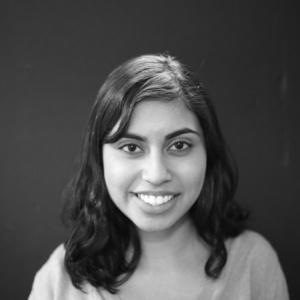Jaipuriar: Modern student activism should not be discredited
In the 1960s, an era famed for its passionate political activism, The Beatles provided the youth anthem for wanting a revolution to change the world. More than 50 years later, college students are singing the same tune.
A group of Syracuse University students, along with peers from Colgate University and the State University of New York College of Environmental Science and Forestry, are pledging solidarity with Jawaharlal Nehru University (JNU) in New Delhi, India, to protest police action against student activism. The support follows similar demonstrations by SU students who have previously expressed solidarity with protesters in Ferguson, Baltimore and the University of Missouri.
The strength of political activism is clearly growing in power, yet student activists still may not be seen as “revolutionary” by older generations. Undeniably, the overall dynamic of activism on college campuses has changed because being an activist today doesn’t require as much outward dedication or radicalization. While some students are incredibly passionate about their beliefs, there are also those who can passively support a cause and free ride on the effort of others.
“We were closing down universities, marching in Washington and going to Mississippi,” said Susan Wadley, an anthropology professor in SU’s Maxwell School of Citizenship and Public Affairs. “To me even the Black Lives Matter stuff is very, very minimal compared to where we were.”
But any form of political participation, physical or virtual, is better than none. Tula Goenka, an associate professor in the S.I. Newhouse School of Public Communications said that young people today are breaking out of apathy.
“Students have been protesting for a long, long time,” Goenka said. “After (the Vietnam War), there was a certain complacency in society, and students were not that actively involved. In the last few years, it somehow seems like the students are once again really engaged.”
As tragic as they were, the deaths of Mike Brown and Freddie Gray have rekindled a sense of social responsibility on college campuses. Without movements like Black Lives Matter, these stories would have gotten lost in the 24-hour news cycle, causing uproar for a few minutes, only to be promptly forgotten after the next big headline.
In the first wave of civil rights movements, political participation commonly came in the form of sit-ins and joining the Black Panther party. Activism today, however, doesn’t necessarily involve as much rebelliousness or risk. Now, you can support a cause by simply clicking “retweet” or “like” on Twitter.
Sometimes a hybrid of both types of activism can be one of the best ways to reinforce the persistence and boldness of activists across the country. This was demonstrated on SU’s own campus last year by the student-run coalition THE General Body, which supplemented older methods of protest, including an 18-day sit-in in Crouse-Hinds Hall, with reaching out to protesters on social media.
While solely showing support through social media seems less passionate, it allows a greater number of people to be involved with social movements. Because of this instantaneous news through the Internet, students at SU were able to pledge support for students at JNU, Goenka said. As one of more than 60 individuals to sign the petition, Goenka also credits Syracuse’s active South Asia Center.
The international prevalence of issues, including police brutality and inequality, shows that universities now not only have to answer to their own students, but also students both domestically and across the globe. This sense of camaraderie is essential to today’s college experience because it exposes students to real world issues and helps them become a part of something bigger than their own campus bubble.
But while this global reach is beneficial for students seeking support for their respective causes, it can also be dangerous. Even though it allows for more connections, students are now more likely to get caught up in the heated fervor of instantaneous news or form snap judgments based on 140 characters — which may sometimes be accurate, but sometimes not.
Just take a look at the controversy spurred by “Hands up, don’t shoot.” Although the slogan is now a rallying cry for many activists — even making an appearance in Beyoncé’s “Formation” video — the Department of Justice’s investigative report on the shooting of Mike Brown concluded that the gesture of surrender could not be confirmed.
While it was ultimately a speculated event based on conflicting witness stories, “Hands up, don’t shoot” instantly gained lots of support, as most young people are drawn to things that go viral. Buzzwords can help social and political movements because more people are prompted to participate, but students should take time to fully educate themselves on an issue before pledging loyalty.
Political expression by students today may not be as gung-ho as previous generations, but activism depends on the context of the era, and it isn’t fair to say that one generation is more passionate than another. Though activism today may not be like a Beatles’ song, political consciousness looks different for everyone.
But what remains the same, and what should always be the primary focus, is that activism is an intellectually active process. It requires students to discover the truth for themselves, rather than accepting what is told to them.
Rashika Jaipuriar is a freshman broadcast and digital journalism major. Her column appears weekly. She can be reached at rjaipuri@syr.edu and followed on Twitter @rashikajpr.
Published on February 25, 2016 at 1:41 am





